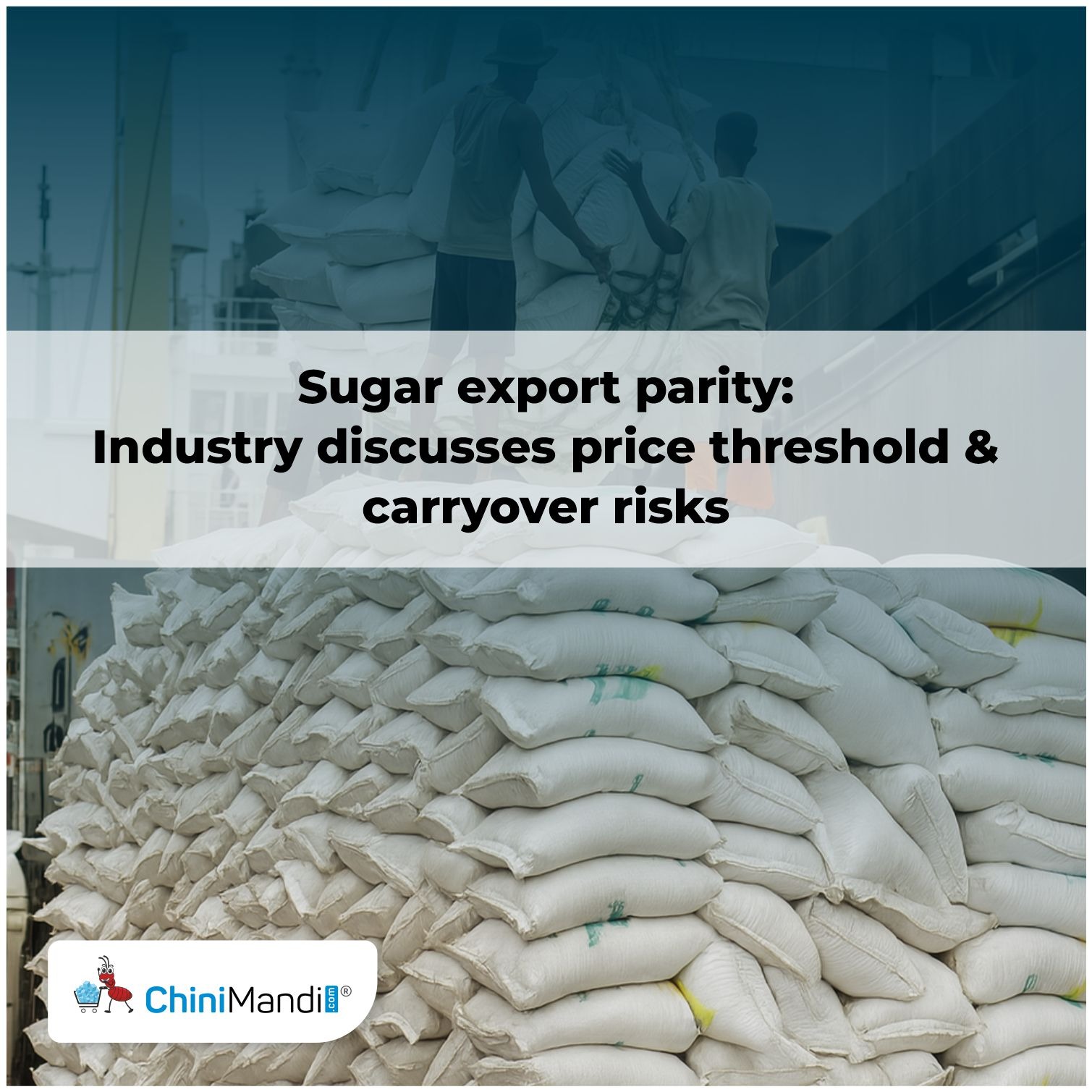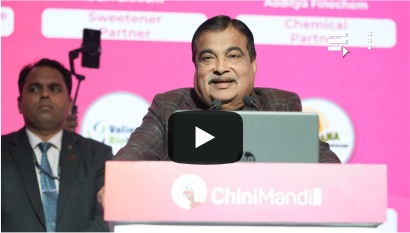In the previous article titled ‘Assessing sugar export in 2025-26 SS: How much sugar should India export?’ dated 1st September 2025, we talked about a consensus emerging amongst the industry of about 20 lakh tons of sugar export in the new season of 2025-26, which is beginning in less than 25 days.
Now the question arises about the export parity that sugar mills should look at before shipping out the stocks. The global sugar prices are trading at a tight price band of 16 cents to 17 cents.
Are the current international prices are viable for Indian exports is under scrutiny.
At this point, with only the Brazilian crop taking the centre stage, the major global cues for prices are being determined by Brazil’s production. However, as the year ends, two important sugar producing countries- Thailand and India- will take the spotlight, and the global Supply and Demand equation, plus the expected sugar production and balance-sheets of these two countries, will set the tone of prices for the coming months.
Regarding the export price parity, industry leaders are emphasising a fine balance between domestic pricing, international parity, and the looming threat of rising carryover stocks.
Domestic prices key
Atul Chaturvedi, Executive Chairman of Shree Renuka Sugars, said it’s more of a domestic play that will determine the viable export parity. He said that “For exports to be viable, the Indian exporters should get a minimum ex-factory price of Rs 39 to 40 per kg, with that the transportation and Fobbing expenses should be added to get FOB value”.
Overhand of carried forward stocks
An industry expert said that emphasis should be on the season’s carried forward sugar stock, which is not more than 5 MMT. “We have seen Europe pushing sugar even at a discount to the domestic prices for export, to avoid carrying the inventory, despite the cost of capital being cheap there. Here, in India, with bank rates @ 10-12% and then a few mills drawing unsecured loans from traders @ 24-36% interest, which eventually results in very high carrying costs. This can easily be subsided by taking a timely export decision”, he said.
He added that the export price parity is just subjective, and said, “The bigger objective is to ensure that in the next season of 2026-27, which with this bumper monsoon looks to be bigger than 25-26 sugar season, we are not starting with carrying stocks of more than 5 mn MTs”.
Benchmark price
Prakash Naiknavare, MD of the National Federation of Sugar Cooperative Factories (NFCSF), said that the export price parity for Whites should be $ 500 per ton and for Raws it should be € 19 +.
Mohan Narang, Director of KS Commodities, feels that the export parity will be determined by what the London futures are. He said, “If we allow the entire sugar for exports in one go, then London white sugar future prices will collapse. This will not benefit the domestic sugar industry”.
Jatin Kothari, Senior Executive Officer at The Ugar Sugar Works Ltd, said that anything above $ 485-500/MT will encourage industry players to export sugar.
As we are nearing the new season, which promises to be a bumper sugar production year, the balance lies between ensuring sufficient domestic availability, diversion for ethanol production, and tapping into global market opportunities to unlock the value of the surplus sugar.
It is important that the Government takes note of all the factors and announces an export policy soon for the new season, which will give a much needed direction to the mills.
















